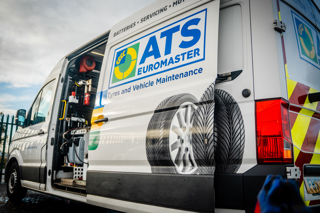Holman has reduced its downtime average by a further day-and-a-half in the past year to a record average vehicle off-road time of 2.24 days in August 2024.
A year ago, the figure stood at an average 3.79 days for all core fleet customers, from the point a vehicle was declared off-road to being back in operation.
However, changes to the structure of its downtime teams and processes, as well as an investment in specialist expertise, has seen it reduced further.
Holman calculates it has increased the amount of time its customers’ vehicles are available and on the road by more than 240,000 hours a year.
A tiered approach to downtime means that now, when an asset is identified as having a ‘vehicle off-road’ (VOR) issue, the team is immediately on the clock to manage the vendor and monitor any repair work.
“Where Holman really specialises is in the problem cases,” explained Matt Hill, Holman’s fleet operations manager.
“Our tiered approach means that more straightforward repairs are immediately pushed through by the downtime controllers, as soon as they see that there are more complex or technical issues that need managing, the job is escalated to the technical members of the downtime control team.”
Holman explains that the downtime control team are experts, well-versed in vehicle repairs, who take control when a problem has been flagged.
It is their job to find alternative solutions which will get the vehicle back on the road quicker, such as finding alternative parts, moving jobs between workshops in its 2,000-strong vendor network, or even looking at different ways of effecting the repair.
Downtime control team leader, Ali Hammond, said: “Because our team members have been technicians or have industry knowledge themselves, they know the issues workshops encounter.
“We’ve tasked the team with being problem solvers, finding innovative ways to keep the repair process moving and getting vehicles back on the road as quickly as possible.”
He explained: “We prioritise getting our customers’ vehicles back on the road as quickly as possible, treating it with the same care and attention we would give our own.
“While our recommended solutions may not always be the cheapest repair options, we ensure transparency by presenting the options to our customers. This way, they can decide whether to proceed with the quicker repair or opt for a potentially cheaper solution that may take longer to conclude.”
The true cost of VOR is more than the repair bill and can add up to many thousands of pounds a day in some cases.
Hill said: “We have always believed we are an industry leader in minimising downtime. But in the past year, we’ve taken this skillset to a whole new level, as these incredible results demonstrate. And we’ve done this while taking on a number of major fleet contracts.”
He concluded: “The challenge now is to improve again. At just over two days, it might not be possible to bring the average downtime down again, but instead our goal will be to provide even better service and being proactive in finding solutions before the issues arise.”
Find out from Fleet News how to optimise fleet service, maintenance and repair.

























Login to comment
Comments
No comments have been made yet.